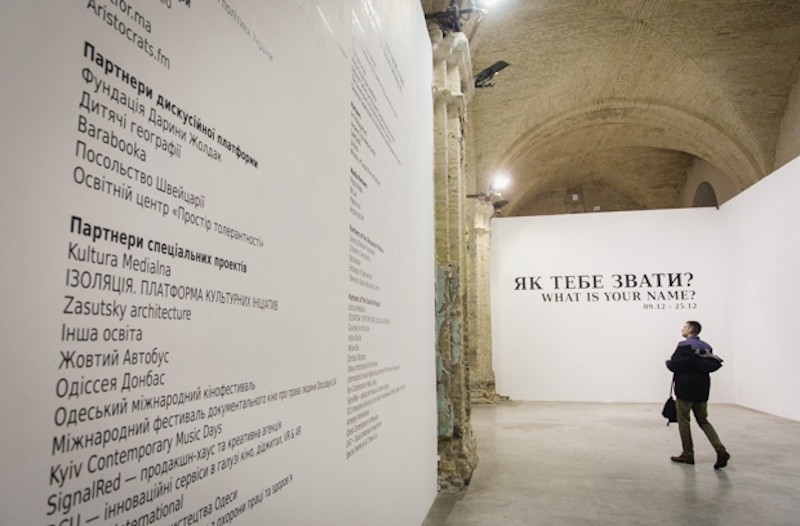
“When working on the exhibition and designing the project with Anna Sukhodolskaya, I often came back to the same thought – I wish this project has never happened,” said Polina Tolmacheva at the press conference dedicated to the opening of the “What Is Your Name?” exhibition. “I think many of those who worked on the exhibition would also prefer for Ukraine not to have such a huge humanitarian crisis, for the problem of internally displaced persons not to be so acute. But as the problem is there and children suffer, we cannot remain silent and look away. That is why we had to organize such exhibition.”
Still, it is not just about an exhibition. “What Is Your Name?” is simply one cog in a big machine of information and humanitarian campaign, “You Are Among Your Own People,” initiated by UNICEF and implemented by FILM.UA Group and StarLightMedia with the support of the Ukrainian Ministry for Occupied Territories. Apart from the exhibition, a documentary was made under the aegis of the campaign, and a competition of short stories was held for a book to be published afterwards; a cycle of social videos to raise awareness among Ukrainians about the issue has also been created.
Rudy Luchmann, UNICEF representative in Ukraine, says:
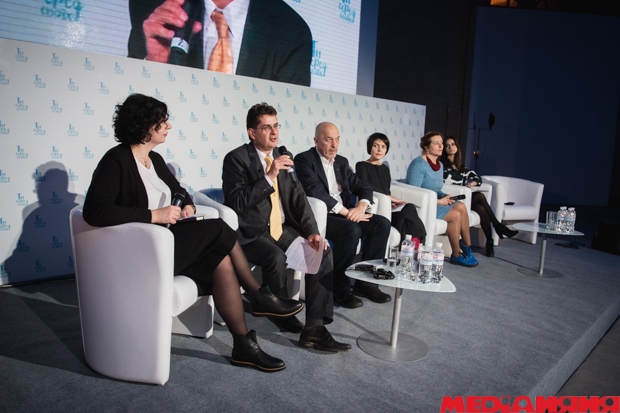
“I think that the very title, ‘What Is Your Name?’ explains it all. This is the question children ask each other all the time. Lately it happens more and more often at school, clubs and extracurricular activities when they meet children who had to move due to the conflict in the east of Ukraine. And there is a plethora of possible answers behind every answer to this question. I think that Arsenal has managed to find several ones that are just spot-on.
“I especially like this installation with video portraits. In this video, children don’t say anything, they simply look in the eye of the interlocutor behind the camera. You can hear their story in the headphones, but to do this you must look them in the eye.
“Imagine a whole stadium, for example Olimpiysky, filled to the brim with people, like at an Okean Elzy concert. All these people are children. Imagine three stadiums like that filled with children in Ukraine who lost their homes and were forced to move. Some keep living in the houses ruined by the shootings. All these children are victims of the conflict. All of them need your help.
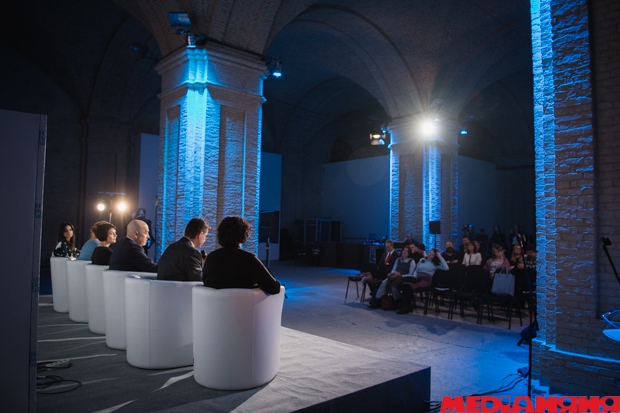
“We don’t even mention adults, though it is yet another huge humanitarian problem. They can’t be even measured in stadiums – there are 1.7 million of IDPs, a whole big city.
“I am sure that you’ve read at least ten times on Facebook about growing fees for utilities or the changed minimal cost of the merchandise which can be imported into the country without customs clearance. Do you remember the last time you came across at least a mention about children who were forced to leave their homes?”
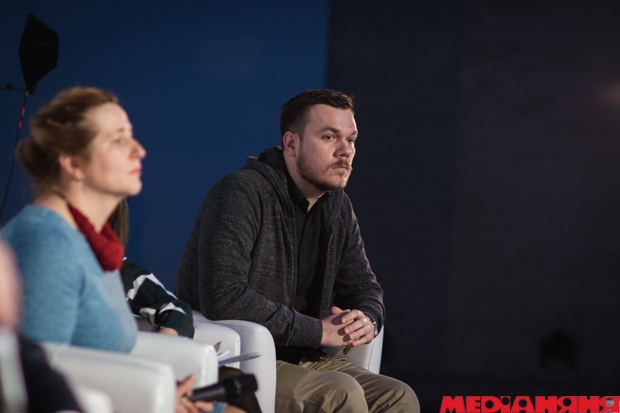 Dmitry Sergiyenko, an artist from Luhansk (and Isolyatsiya, a Donetsk project) is adamantly for children to be spoken about but for the adults not to be forgotten
Dmitry Sergiyenko, an artist from Luhansk (and Isolyatsiya, a Donetsk project) is adamantly for children to be spoken about but for the adults not to be forgotten
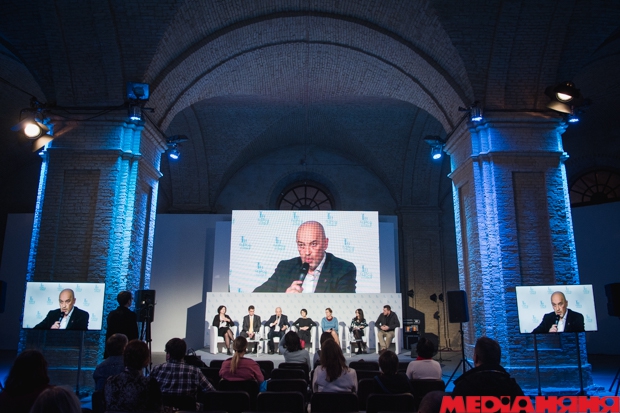 Georgiy Tuka, deputy minister for occupied territories, continued explaining the gist of the project in the same vein.
Georgiy Tuka, deputy minister for occupied territories, continued explaining the gist of the project in the same vein.
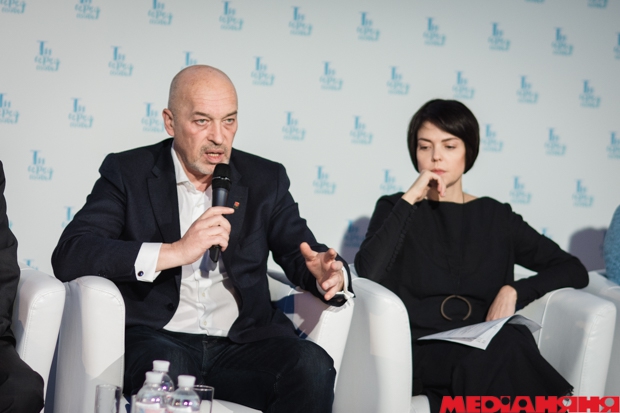
“I must confess that in the beginning I didn’t do anything about children in my everyday work. That is why, when I first sent IDP children to a summer camp in Western Ukraine and then came to visit them, I lived through several shocking moments. The first shift in the camp has 35 vacancies for children, but there were only nine of them willing. Parents had to gather up all their courage to send the child to a summer camp; they were afraid that he’d come back beaten up by his peers. For the second shift there were 35 applicants, and for the third one – 55, with the same 35 vacancies.
“One of the orphanages accepting IDP children who became orphans was in Vinnitsya region just next to the airport. For the first several weeks after a six-year-girl was accommodated there, she heard plane noises at night, woke up and hid under the bed. She also woke up all the others and told them to hide as well: the plane has taken off, so it means that the shooting is about to start. This is a reality in which six-year-olds should not live.”
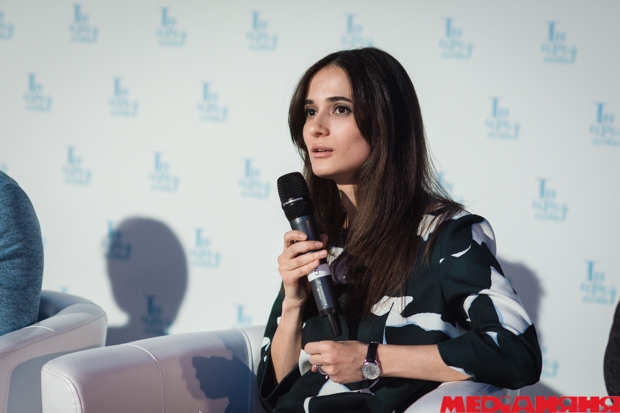 Tatyana Kazanzhi from StarLightMedia reminded the audience that the exhibition is a part of bigger campaign
Tatyana Kazanzhi from StarLightMedia reminded the audience that the exhibition is a part of bigger campaign
“Our social advertising videos made for the ‘You Are Among Your Own People’ campaign were watched on group channels by 14 million people. It is more than a third of the Ukrainian population.”
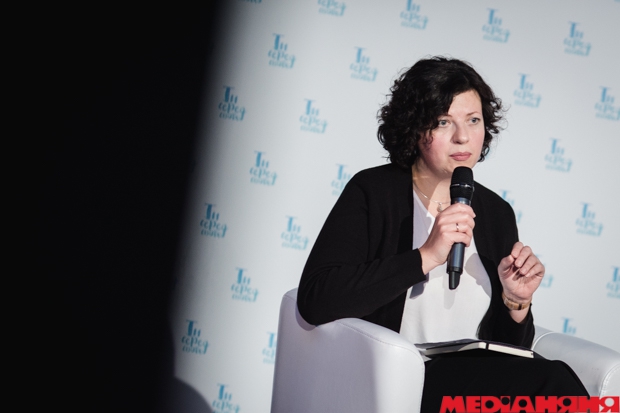 Olesya Ostrovska-Lyuta, director of Mystetsky Arsenal, spoke directly about the budget even before the journalists asked this question
Olesya Ostrovska-Lyuta, director of Mystetsky Arsenal, spoke directly about the budget even before the journalists asked this question
“Don’t ask me how much this exhibition cost; I can’t calculate this sum yet. Just as any big event, the exhibition consists of hundreds, if not thousands of small and big problems. They spread out, and it is possible to hold on till the very end only through the heroic effort of a curator, in this case organizer Polina Tolmacheva; it is thanks to her that the exhibition happened.
“I can quote an average budget; I don’t think that it is radically different from the actual one. On average, an exhibition in Mystetsky Arsenal costs about 1.2 million UAH. It is a big sum for an exhibition, but we have rather challenging premises – a lot of money is spent for its heating, lighting, security, etc.
“The entrance to this exhibition is really ‘free of charge’ – for the visitors. Because all the tickets were bought beforehand by UNICEF. That is why at any time – meaning Arsenal’s working hours – the entrance to the ‘What Is Your Name?’ exhibition between December 10 and 25 is free for all our guests.”
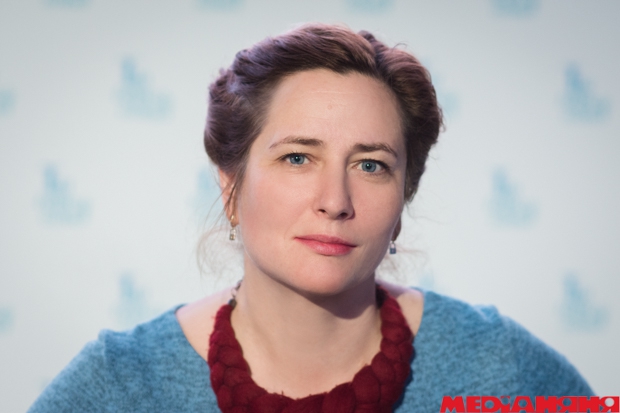 The author of project concept Polina Tolmacheva, FILM.UA Group marketing director, told me a bit about the exhibition
The author of project concept Polina Tolmacheva, FILM.UA Group marketing director, told me a bit about the exhibition
There are some unusual works presented here, including new formats. “Do I understand it correctly that there was a call out to the film industry with a proposal to get involved, and you pitched in?”
Tolmacheva responded: “We did. But not with the joy and gusto we normally experience when taking up new projects – as I’ve said during the press conference, I would have liked to make a project about something different. I would have liked to say that children live in the world of rainbows and unicorns. But this narration is dictated by reality, and in this case Ukrainian cinema has shown it is ready to accept any challenge.
“We can react to any topics, even painful and stigmatized ones. Like Gena Vishnevsky and Roma Orel, who went to the military zone themselves, to the places where shootings are still ongoing, and filmed the houses – or what was left of them – for Digital Cinema Ukraine, in a 360-degree format. Sometimes VR technology is just a toy, but sometimes you put the glasses on and find yourself directly in the house where the walls have fallen or are honeycombed after shootings. Take Slava Pilunsky, a top Ukrainian DOP, who opened a school in the heart of ATO zone and teaches children to film. His Yellow Bus is a project coming straight from the heart. It is also a chance for children to get distracted and to learn something useful. My husband Oleg Tolmachev went out for a day to film the work of a volunteer theatre where children from the East and West of Ukraine write a play together and immediately stage it along with film and theatre professionals. He ended up staying there for two weeks to make a film with them. This exhibition is what the artists are really working on. This is not some slapped-up mix of installations; these are carefully selected projects gathered under one roof.”
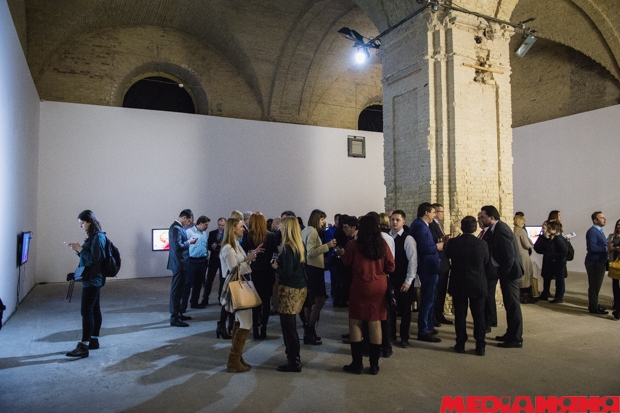 Meanwhile mere minutes were left until the official opening, and the guests started to file in
Meanwhile mere minutes were left until the official opening, and the guests started to file in
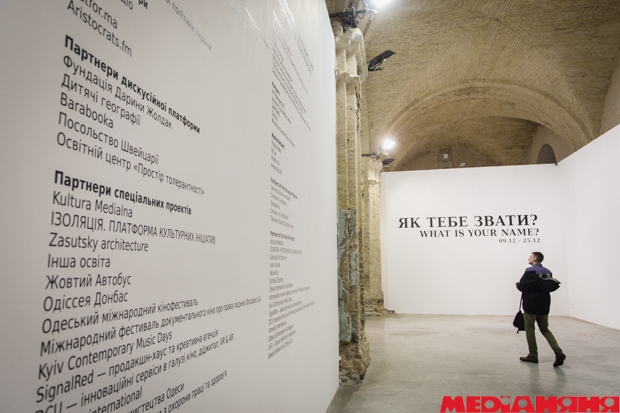
The program looks impressive – almost each day out of two weeks of the exhibition this or that special event is held, starting from Sea in Fire screening (best documentary of the year according to European Film Academy) up to lectures from directors and even classes in the Fun Science club. A full program can be found here.
And the displays don’t need any introductions:
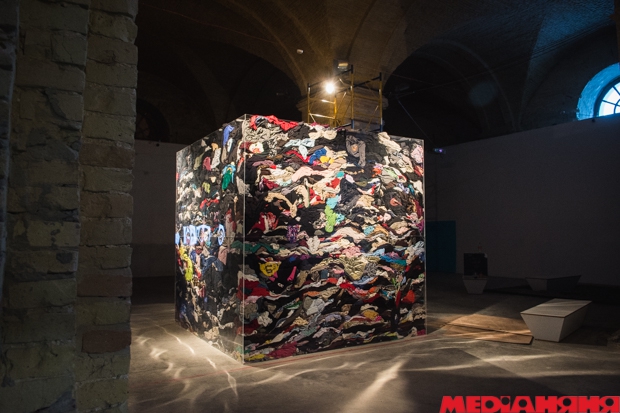 How The Black Square has transformed since Malevich’s times
How The Black Square has transformed since Malevich’s times
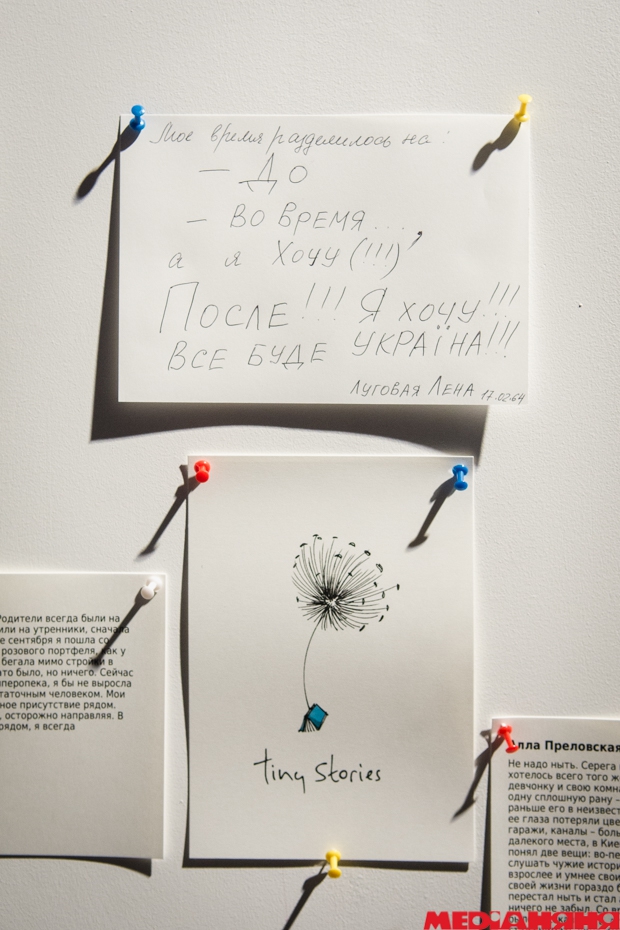
“Tiny Stories”
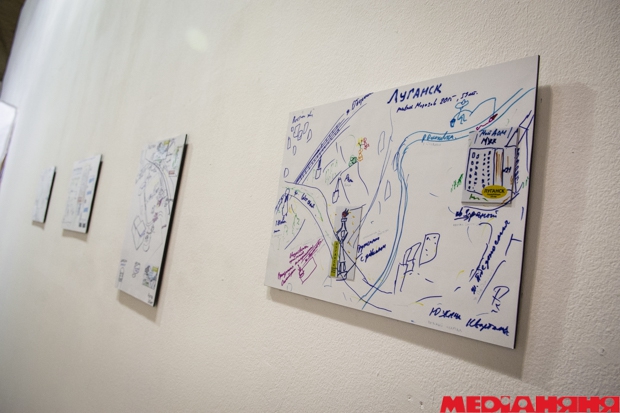
Maps of places where now only ruins are left; drawn by children from memory
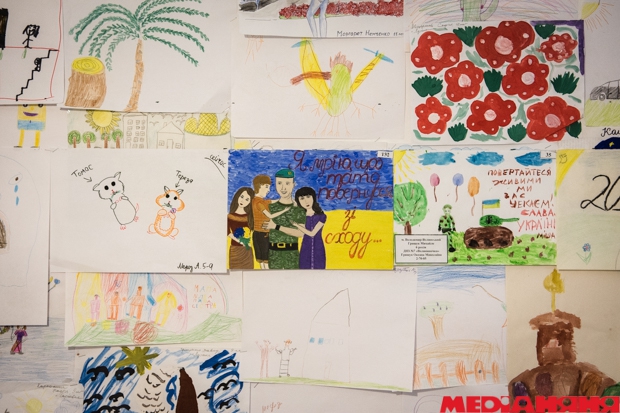
Drawings
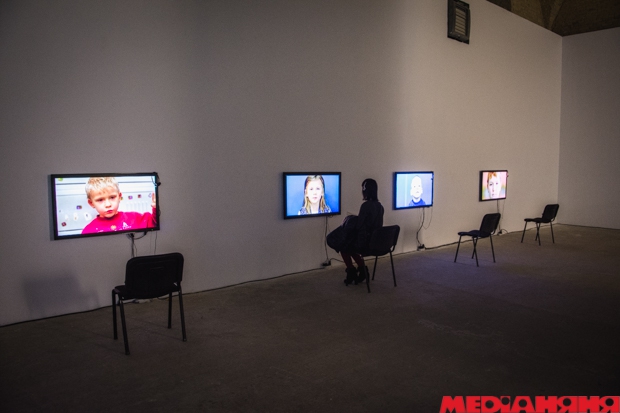
And the abovementioned stories where I found Rudy Luchmann again
“The most important thing about our project is to remind everyone that IDPs are also Ukrainians,” he says. “These are Ukrainian children who have lost their homes and sometimes even families. They are not refugees from somewhere far away, this is not something you can ‘close off the border’ from. They are Ukrainians. Misery came to their homes. Military action is not much different from a natural disaster by its impact. Children must be protected from this humanitarian disaster, they must be helped, not isolated or accused of all deadly sins.”
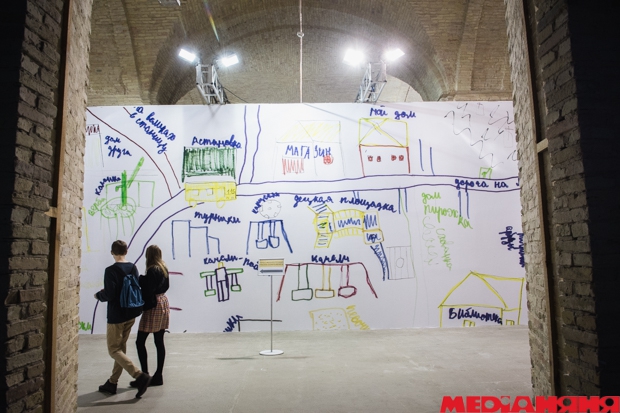
Truth be told, there were few people willing to share their impressions or discuss what they have seen
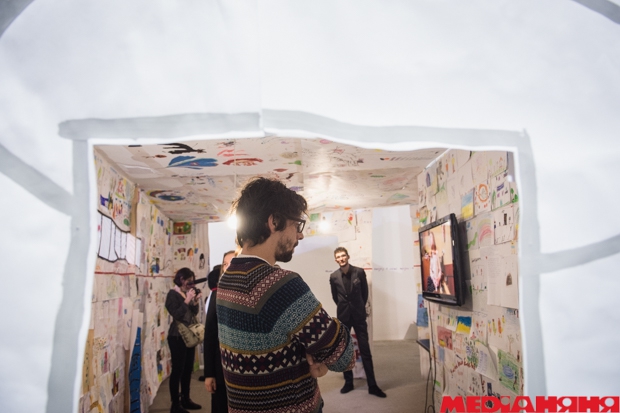
And though many had tears in their eyes…
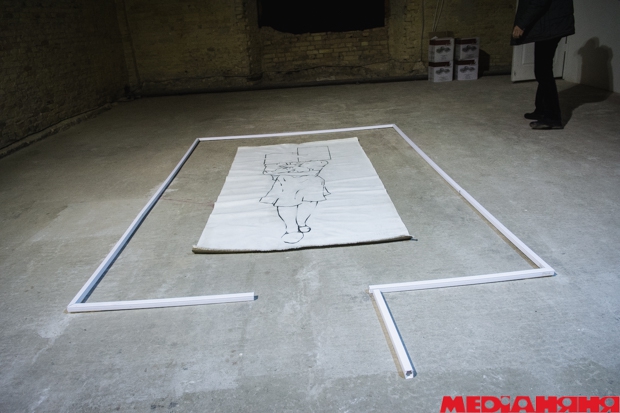
And hearts sinking…
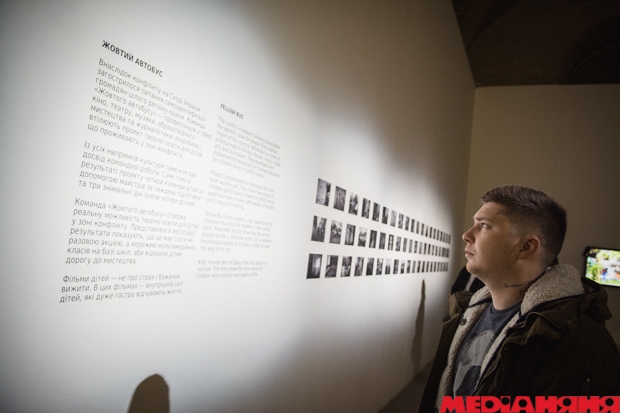
The guests preferred to simply absorb the art
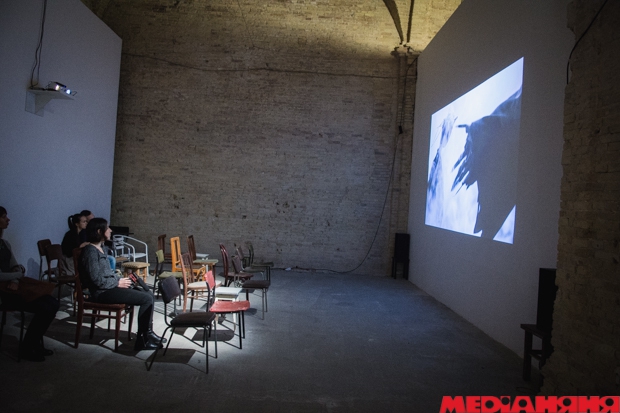
Not talk about it
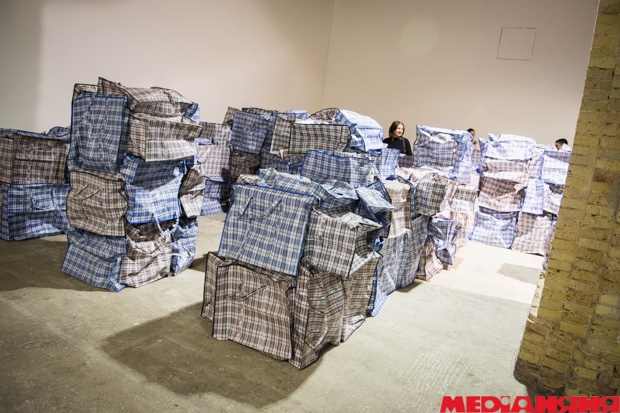
And it is too bad because the main task of the exhibition is for the problem of children IDPs ceasing to be a taboo topic in public discussions. Still, FILM.UA Group projects took up this task, having offered something unexpected to the exhibition guests, namely the technologies of virtual and augmented reality.
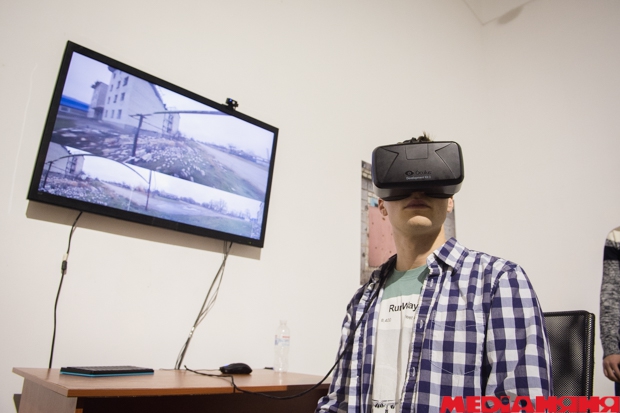
DCU prepared a VR experience We Were Cozy At Home
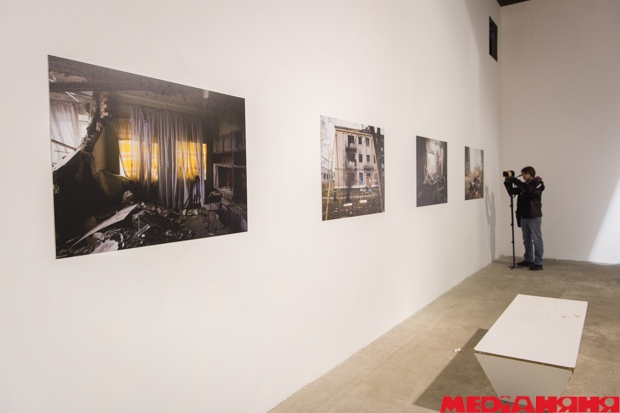
Thanks to it the audience did not have to stick to the photos…
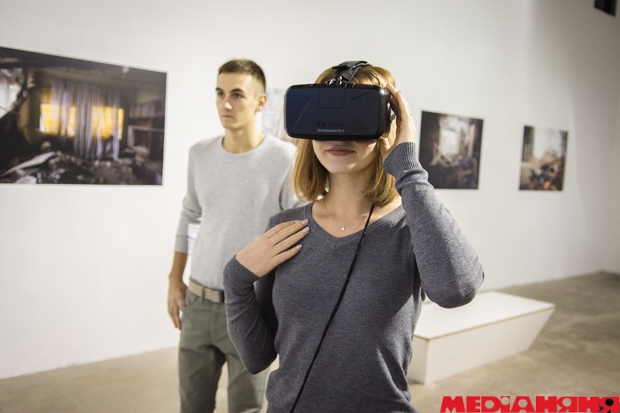
But with the help of virtual reality they could visit the IDP’s homes – or what was left of them. They could try to understand what these children have lost and what they have gone through
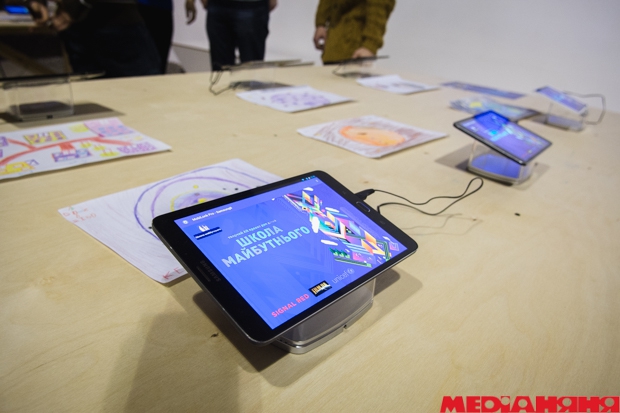
And the second project which made many people smile – School of the Future by Signal Red
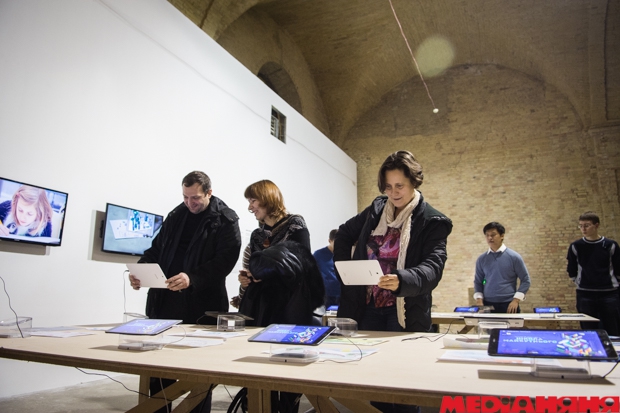
For the school, the drawings by IDP children were transformed into special ‘markers’, and the models of augmented reality were constructed on their basis
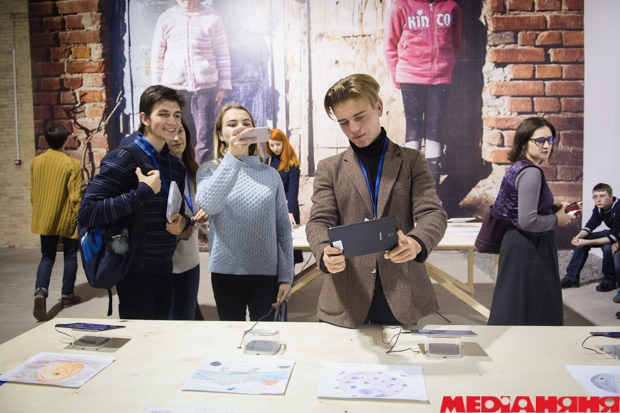
You can view these models with the help of gadgets – special glasses for AR are still in development
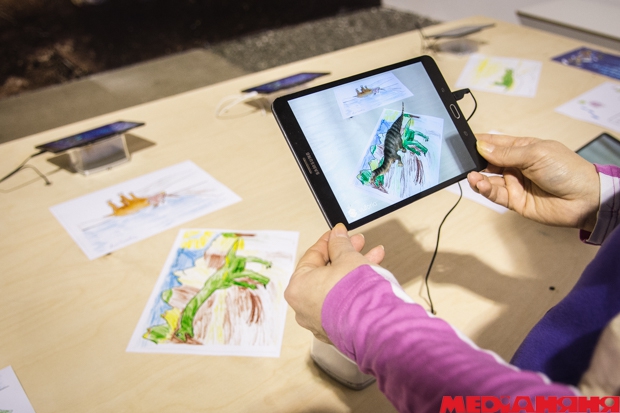
However, we are used to walking around with our noses in a smartphone or a tablet; as for modern children, this is their only way
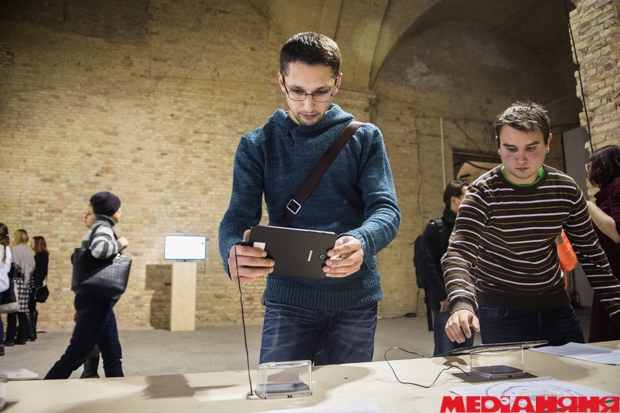 Viktor Shkrobot is engrossed in the process, and he is not alone
Viktor Shkrobot is engrossed in the process, and he is not alone
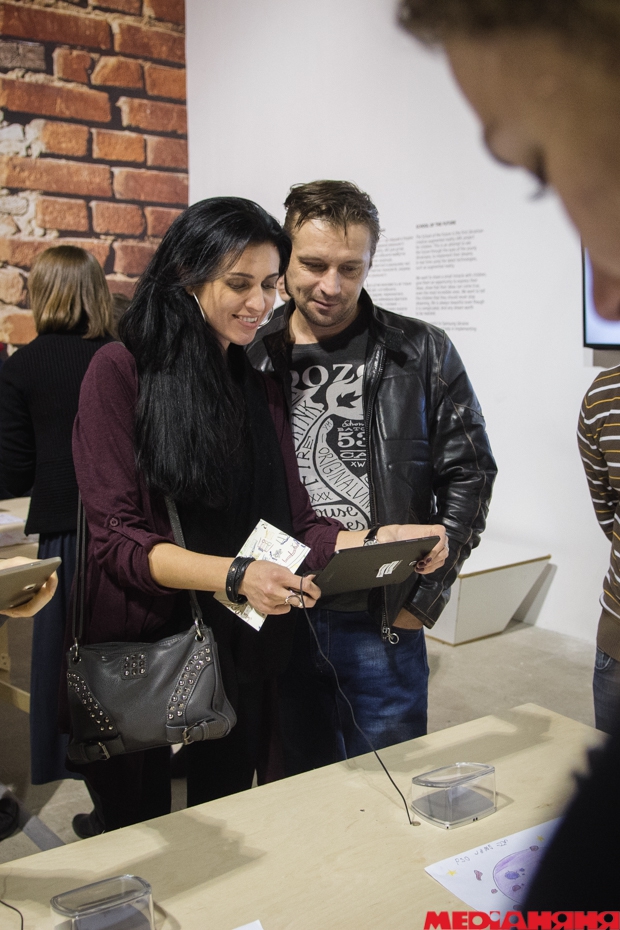
Tatyana Vlasova (ICTV) with her husband
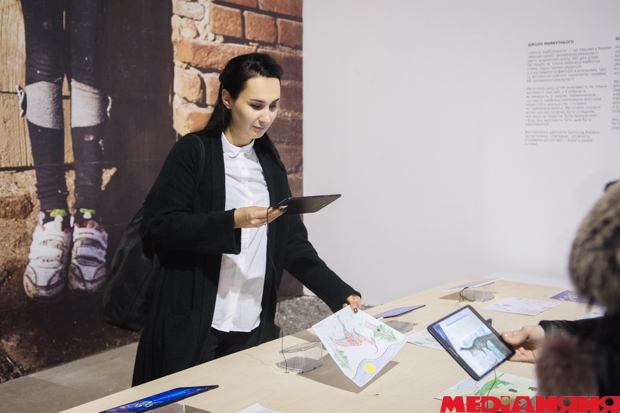
Kasha Saltsova
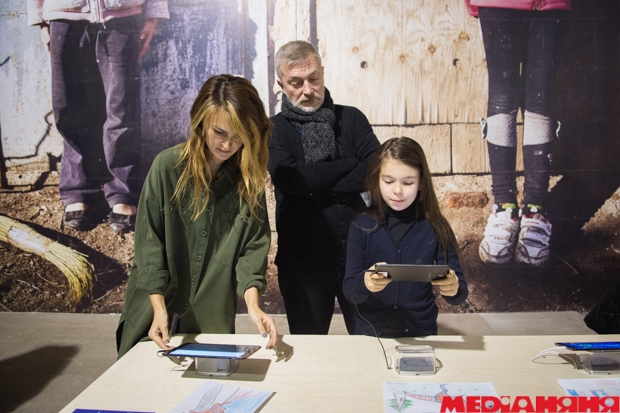
Irina Kostyuk with Nastya Sozanovskaya (closely watched by Sergey Sozanovsky, naturally)
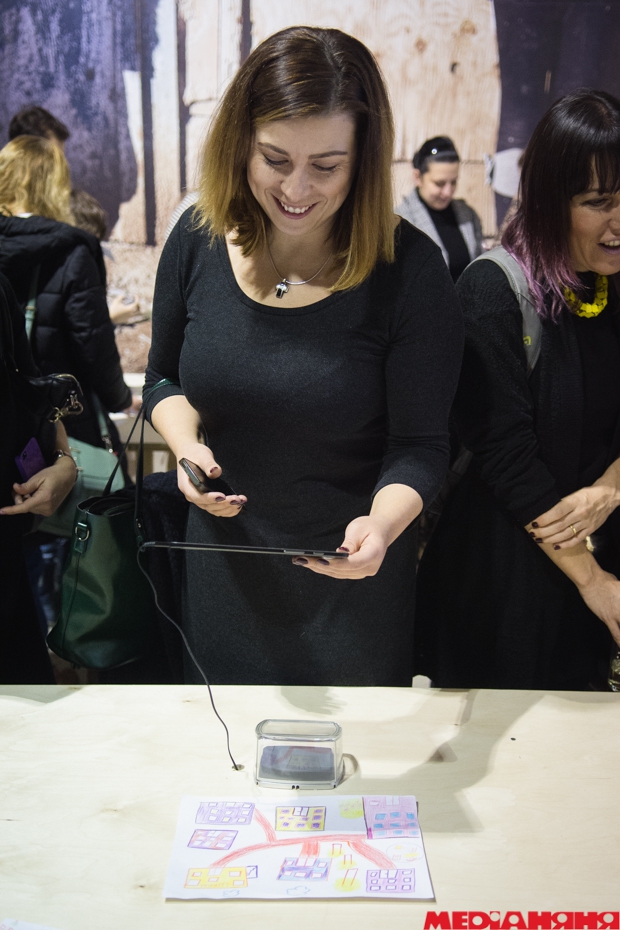
Yulia Sinkevich (OIFF)
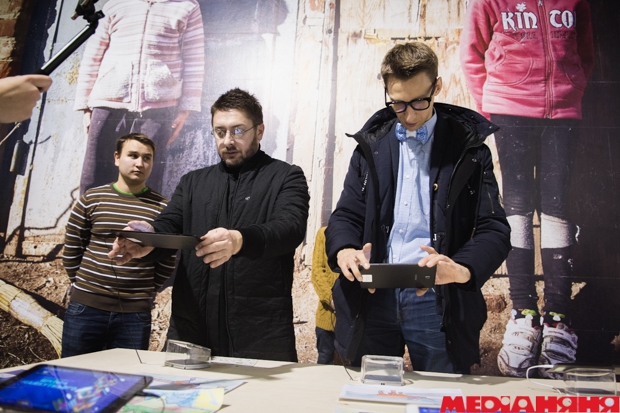
An accidental meeting at the exhibition: TV host of the year Aleksey Sukhanov and former host of Ukraina TV channel Slava Solomka
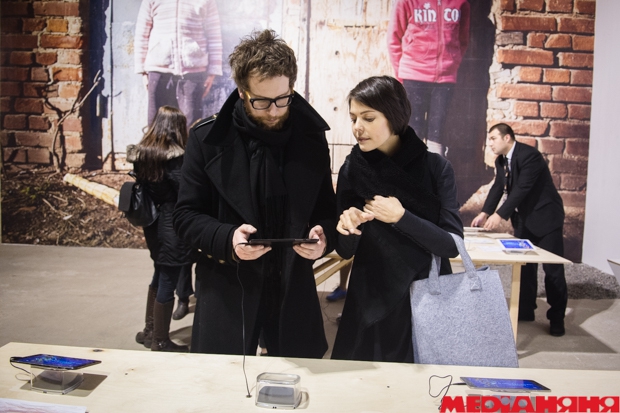
And Yuriy Marchenko (platfor.ma).
The exhibition curator Katya Taylor who probably knows all displays by heart kept coming back to School of the Future:
“Because this exhibition doesn’t just stress the negative. Yes, we don’t turn our eyes away from the terrors of war, but we mustn’t forget to give hope for the future.”
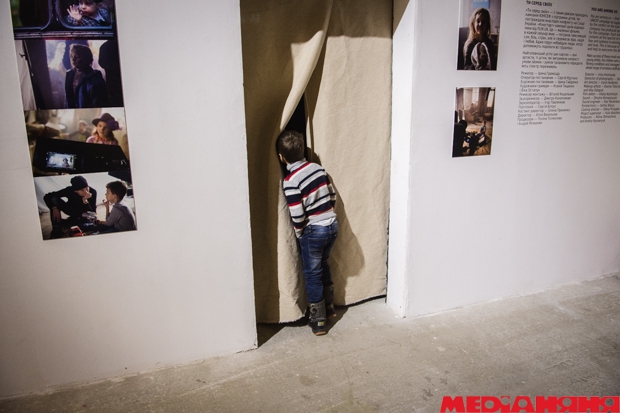
By the way, the future was hiding behind curtained doors – I received this hint from the display guests. It looks good and hopes can certainly be vested into it.
The “What Is Your Name?” exhibition will function until December 25, 2016; entrance for all visitors is free of charge. Still, the UNICEF campaign taken up by FILM.UA and StarLightMedia is only gathering momentum. Soon I will tell you about the companies’ plans for 2017 in the framework of “You Are Among Your Own People” project.
Photos by Kirill Avramenko